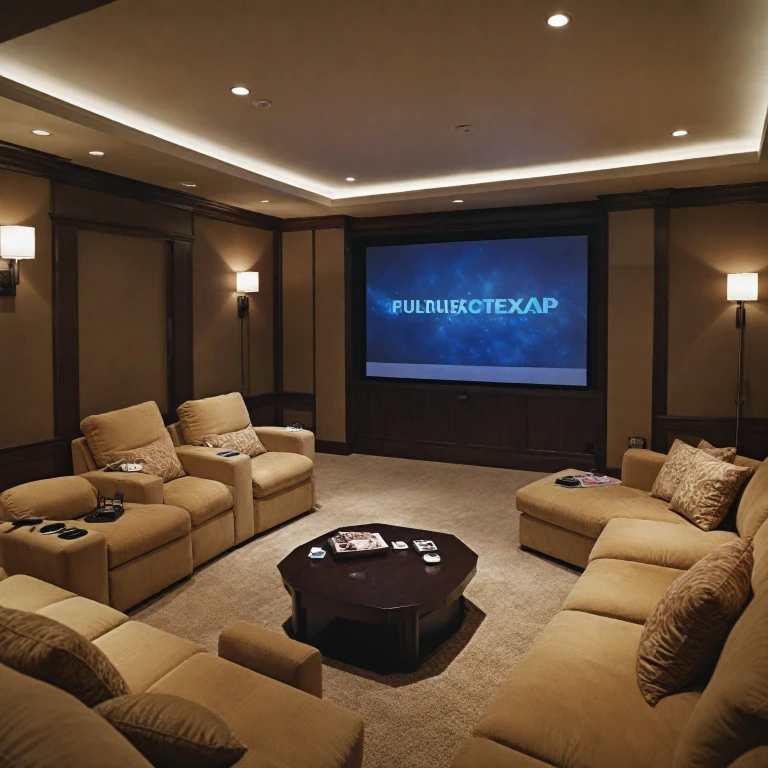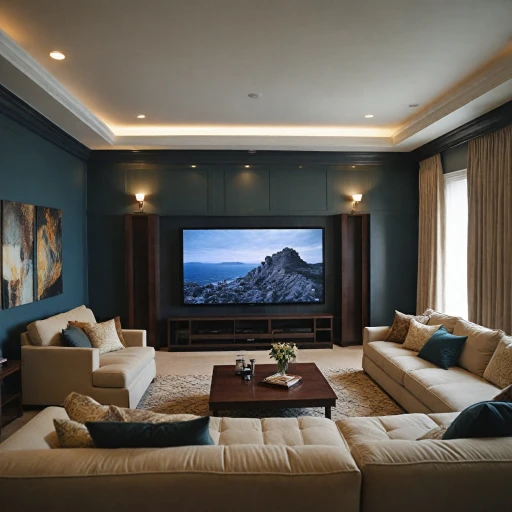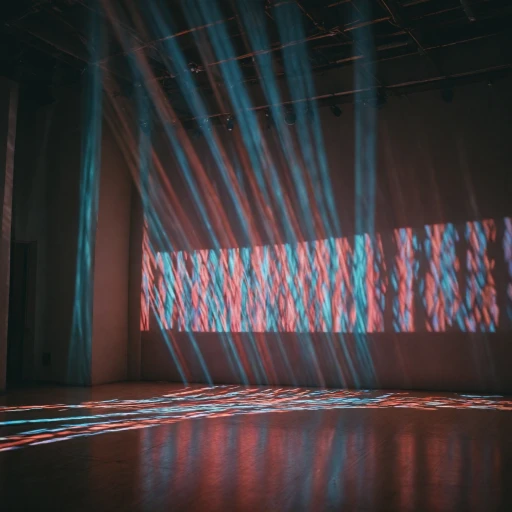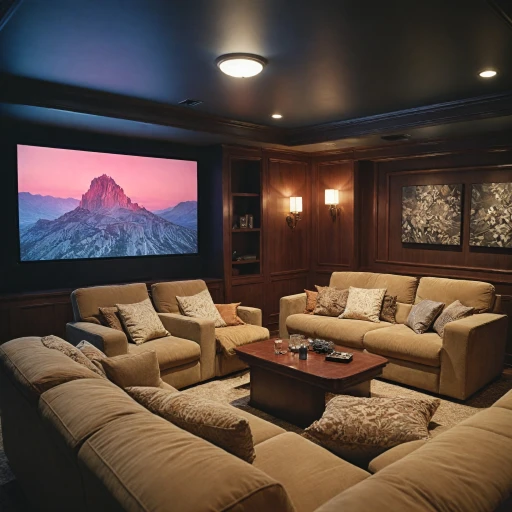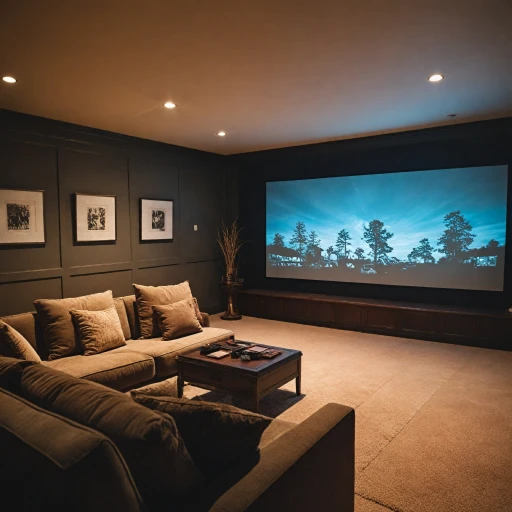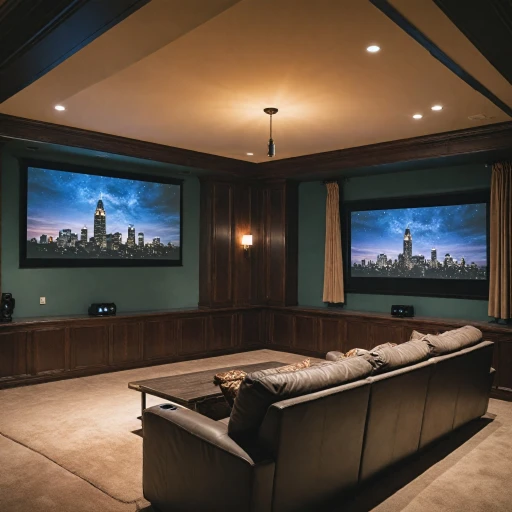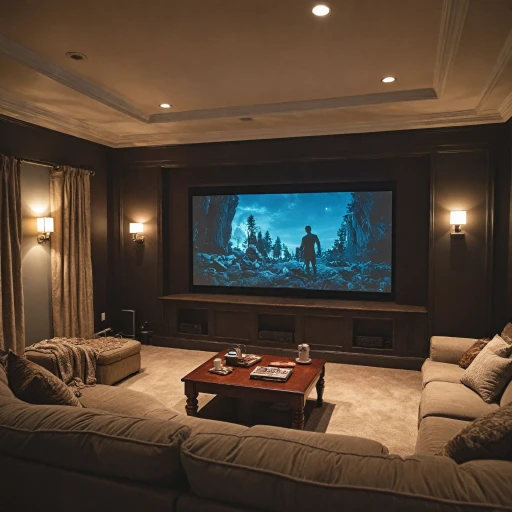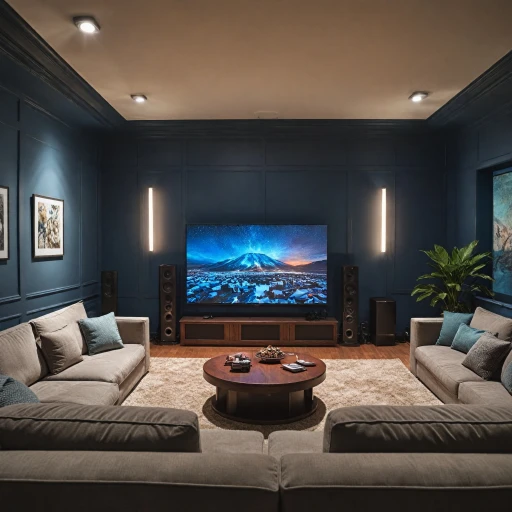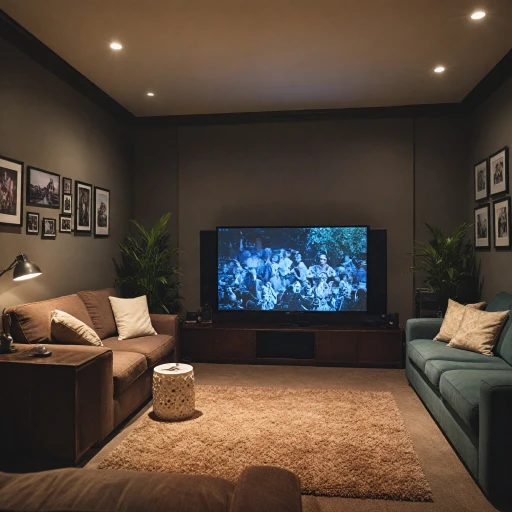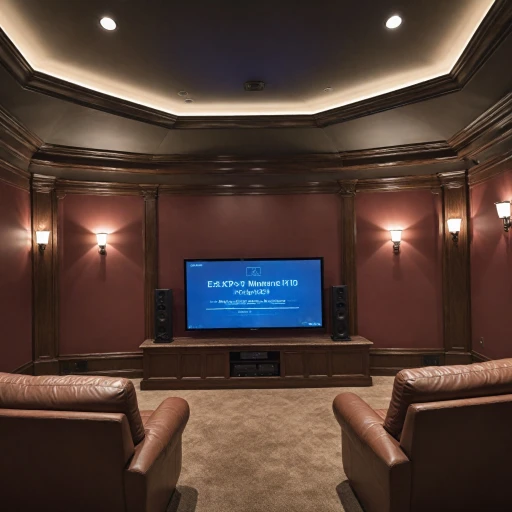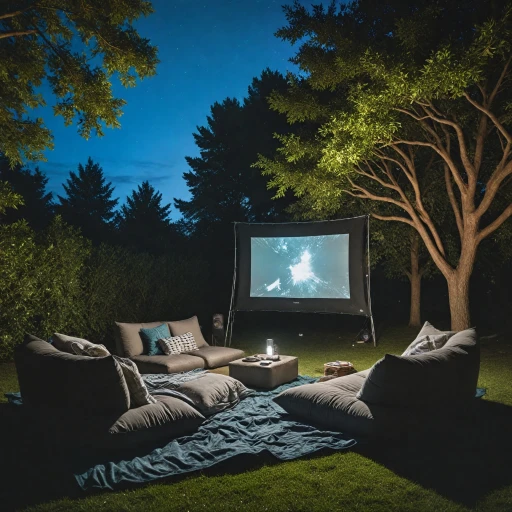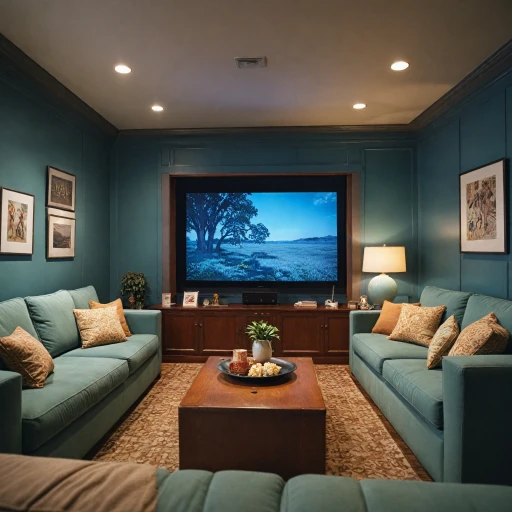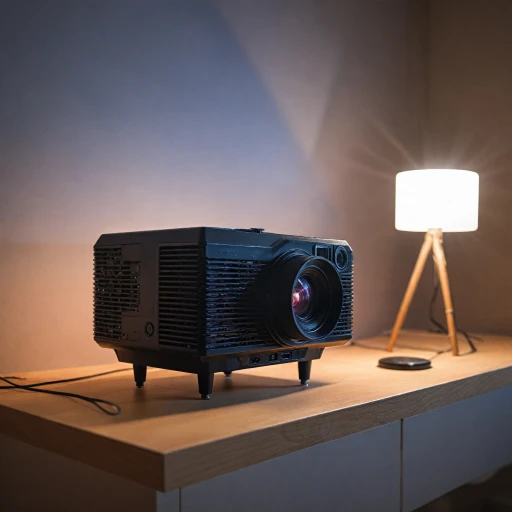
The Basics of Projector Technology
Understanding Light and Image Projection
At the core of any home theater projector is its ability to project images onto a screen, creating a cinematic experience right in the comfort of your home. The technology behind projectors involves various elements working in harmony to deliver a bright, clear display.
Light Source and Projection Methods
Projectors employ different light sources and projection technologies to cast images onto a screen. Common light sources include LED, laser, and traditional lamps. Each has its strengths and weaknesses. For instance, LED projectors are known for their long lifespan and energy efficiency, whereas laser projectors offer excellent color accuracy and brightness.
As for projection technology, the main types are Digital Light Processing (DLP) and Liquid Crystal Display (LCD). DLP projectors use micro-mirrors to reflect light and often boast higher contrast ratios; however, they may sometimes produce a "rainbow effect." On the other hand, LCD projectors utilize liquid crystal displays to produce balanced color images with minimal motion blur.
The Role of Optics and Image Clarity
A projector’s lens is crucial in focusing the light to create sharp images on the screen. The lens quality affects image clarity and size, making it a vital component in achieving high image quality. The throw distance, or the space between the projector and the screen, influences the projected image size. Short throw and ultra-short throw lenses allow projectors to cast large images from a limited distance, ideal for smaller rooms.
Balancing Brightness and Environmental Factors
Brightness, measured in lumens, is another critical factor in projector performance. A high-lumen projector can overcome ambient light, ensuring the screen remains visible in various lighting conditions. To explore more about selecting a projector that caters to your home theater needs, considering factors like brightness and throw ratio, check our guide on choosing the right standing projector for your home theater.
Types of Projectors for Home Theaters
Diverse Technologies at Your Disposal
In the realm of home theater projectors, understanding the various technologies available will help you make an informed decision that enhances your viewing experience. The primary types of projectors are categorized based on the technology used to produce images, each with its unique strengths. Knowing these can assist you in selecting the best projector for your needs.
The Versatile LCD Projectors
LCD (Liquid Crystal Display) projectors are known for their ability to display vibrant images with good color accuracy. They use liquid crystal panels to project an image onto the screen, offering a bright display suitable for rooms with some ambient light. LCD projectors are often praised for providing a sharp image quality and are generally more affordable than other types, making them a popular choice for those setting up a home theater on a budget.
DLP Projectors: Gaming and Movies
Digital Light Processing (DLP) projectors employ a chip covered with tiny mirrors to reflect white light and create an image. These projectors are compact and often lighter than their LCD counterparts. One of their standout features is the ability to produce smooth and detailed video images, making them ideal for movie buffs and gamers alike. DLP projectors often excel in rooms with controlled lighting conditions where you can use a projection screen that complements its capabilities.
Innovative Laser Projector Technology
Laser projectors represent the latest advancement in projector technology. Using a laser light source instead of traditional bulbs results in lower maintenance and a longer lifespan. The laser technology offers superior color accuracy and consistent brightness, which ensures excellent image quality over time. This type of projector is an ideal investment for enthusiasts looking to prioritize longevity and reliable performance.
Specialized Ultra Short Throw Projectors
Ultra Short Throw projectors are designed to project large images from a very close distance to the screen, making them suitable for compact spaces. With a short throw ratio, these projectors minimize throw distance, offering flexible setup options. They are perfect for setups where you want to avoid shadows and interruptions in the projected images, allowing for a more seamless viewing experience.
When evaluating the different types of projectors, consider factors such as the desired image size, how projectors work within your environment, and the resolution and image quality you expect to achieve. Each type offers distinct advantages that cater to different preferences and requirements, so choose wisely based on the ambiance and specific use cases of your home theater setup.
Projection Screen and Room Setup
Optimizing Your Space for Projection
Creating the perfect home theater experience goes beyond just selecting the right projector. To achieve the best image quality and immersive viewing, consider how your room setup and projection screen play pivotal roles.
The Role of the Projection Screen
Choosing an appropriate projection screen is crucial. The screen reflects the projected image, and its material and color can influence image quality. A white or gray screen can provide good contrast in environments where controlling ambient light is challenging. Additionally, some projects work best with specific types of surfaces like the ultra short throw projectors, which are suitable for smaller spaces. Proper screen placement and surface material ensure that the projected image is sharp and clear.
Lighting Conditions
Ambient light is a factor to pay attention to. When designing your home theater setup, consider the light sources in the room. Using darker paints for walls and ceilings can help reduce reflection and enhance the viewing experience. If possible, install blackout curtains to maintain control over ambient light, allowing the projector's lens to deliver the finest resolution without competing with other light sources.
Throw Distance and Image Size
Understanding throw distance is key to arranging your equipment and seating. The throw ratio is the distance between the projector and the screen in relation to the image size. DLP projectors, LCD projectors, and laser projectors have varying throw distances that need to be matched with the room's dimensions. Short throw and ultra short throw models require less space, making them ideal for compact areas, while standard throw projectors are more suited for larger rooms.
Properly configuring your room setup allows the projector to display stunning digital images. By tailoring these elements to work in unison, you're ensuring an optimal home theater environment. For more insights on selecting a multimedia projector that complements your space, visit our guide on choosing the right projector for your home theater.
Resolution and Image Quality
Understanding Resolution and Image Quality in Projectors
When setting up a home theater, resolution and image quality are crucial points to consider. A projector's resolution determines how clear and detailed the projected image will appear on your screen. This clarity is especially important for an immersive viewing experience. Projectors come in different resolutions—ranging from Full HD (1920x1080) to 4K Ultra HD (3840x2160). Higher resolution projectors like 4K models provide superior image clarity, capturing the intricate details and vibrant colors necessary for a stunning picture projection. Technology such as DLP, LCD, and LED contributes to the variances in how these resolutions are produced. Each has its own impact on how crisp and vivid the images will be.Factors Influencing Picture Quality
- Light Source: The type of light source—whether it's LED, laser, or traditional lamp—affects both brightness and color accuracy. Laser projectors, for instance, provide a consistently brighter and more color-accurate image.
- Projection Technology: DLP and LCD are two main types of projectors work that influence image quality. DLP projectors tend to offer better contrast ratios, contributing to a more three-dimensional appearance. On the other hand, LCD projectors often deliver brighter images with more accurate colors in well-lit environments.
- Throw Ratio and Distance: The throw ratio—determined by dividing the throw distance by image size—plays a role in achieving the desired image size on your screen. Short throw and ultra-short throw projectors can be placed closer to the screen and still produce large pictures, allowing for more flexibility in room setup.
- Dealing with Ambient Light: Ambient light can wash out a projected image, so it's important to consider the environment in which your projector will be used. Choose a projector with a high lumen count if you can't control the light or invest in a screen designed to minimize ambient light interference.
Connectivity and Compatibility
Ensuring Seamless Connectivity and Compatibility
In the pursuit of creating a remarkable viewing experience, understanding the connectivity and compatibility options of your home theater projector is crucial. A projector's ability to seamlessly integrate with various devices determines how effectively it will fit into your home setup. Start with assessing the type of input and output ports available on your projector. Common ports include HDMI, USB, VGA, and RCA connections, among others. HDMI ports, in particular, are vital as they transmit high-definition video and audio from commonly used devices, like Blu-ray players and gaming consoles, directly to your projector. A crucial aspect of connectivity is wireless capabilities. Many modern projectors offer Wi-Fi and Bluetooth connections, facilitating a cable-free environment. This technology enhances the overall convenience of streaming content from digital sources, such as laptops or smartphones. Evaluate Device Compatibility:- Ensure that your projector is compatible with your media sources. Whether you're connecting a gaming console, a set-top box, or streaming devices like Chromecast and Apple TV, seamless compatibility ensures a heightened image quality and immersive experience.
- Between LCD projectors, DLP projectors, and the increasingly popular laser projectors, each type offers unique connectivity features. DLP technology, for example, often supports robust digital interfaces for a high-quality projected image.
- The throw distance and throw ratio of your projector dictates both the placement of the device and the size of your image on the projection screen. Understanding this ensures that connections placed away from the projector do not interfere with the projected image.
Maintenance and Longevity
Proper Care and Timely Maintenance of Your Projector
Investing in a reliable projector, whether it's a cutting-edge laser projector or the more traditional LCD and DLP projectors, means you'll want to ensure its longevity and optimal performance. Proper care and regular maintenance will significantly enhance the lifespan of your device, preserving the image quality and performance that make your viewing experience enjoyable.Here, we outline essential maintenance tips to keep your projector running smoothly:
- Regular Cleaning: Dust accumulation on projector lenses and internal components can degrade image quality. Use a soft, lint-free cloth to gently clean the lens. Consider using compressed air for internal cleaning, but take caution to follow the manufacturer's guidelines to avoid damage.
- Proper Ventilation: Projectors generate heat, and maintaining good airflow prevents overheating, thus extending the life of the internal components. Ensure the projector has adequate space around it for ventilation and periodically clean the air filters.
- Bulb Care: If your projector uses a traditional bulb, it's vital to monitor its lifespan. Digitally displayed indicators often provide warnings when it's time for a replacement. Switching to LED projectors can reduce the need for frequent bulb changes due to their longer light source life.
- Firmware Updates: Keep your projector's software up to date. Manufacturers occasionally release firmware updates that can improve performance, add new features, or address certain issues.
- Safe Handling: Projectors are delicate devices. When moving or storing your projector, ensure it's powered down and cooled. This precaution minimizes the risk of internal component damage from shock or vibration.
Regular checks and proper care not only prolong the life of your projector but also guarantee that your light source, whether laser or LED, continues to provide the best image quality possible over time. As you consider the diverse types of projectors for your home theater, keep the maintenance needs in mind to enjoy the full potential of your chosen technology and enhance your white light projection capabilities.
